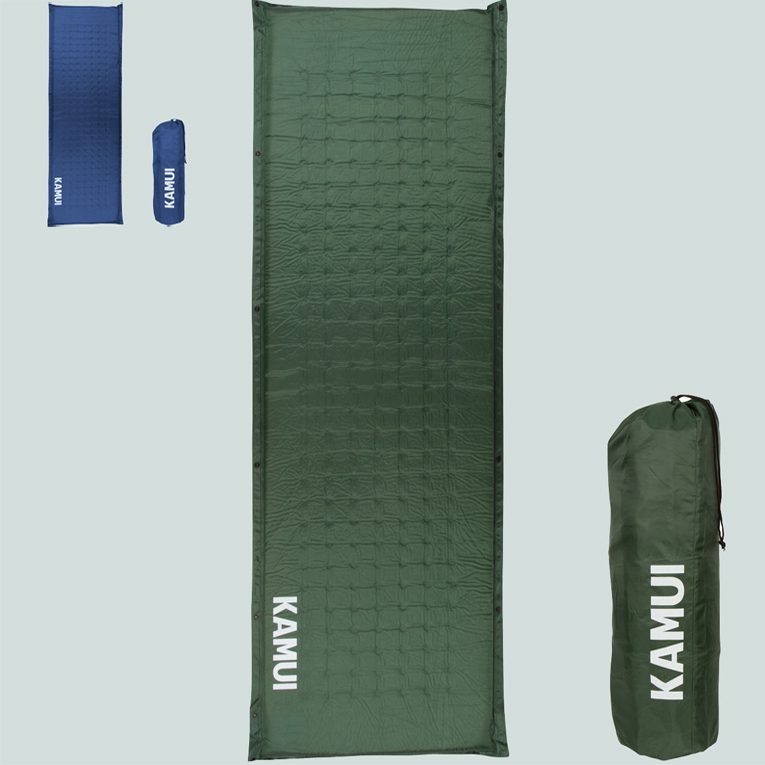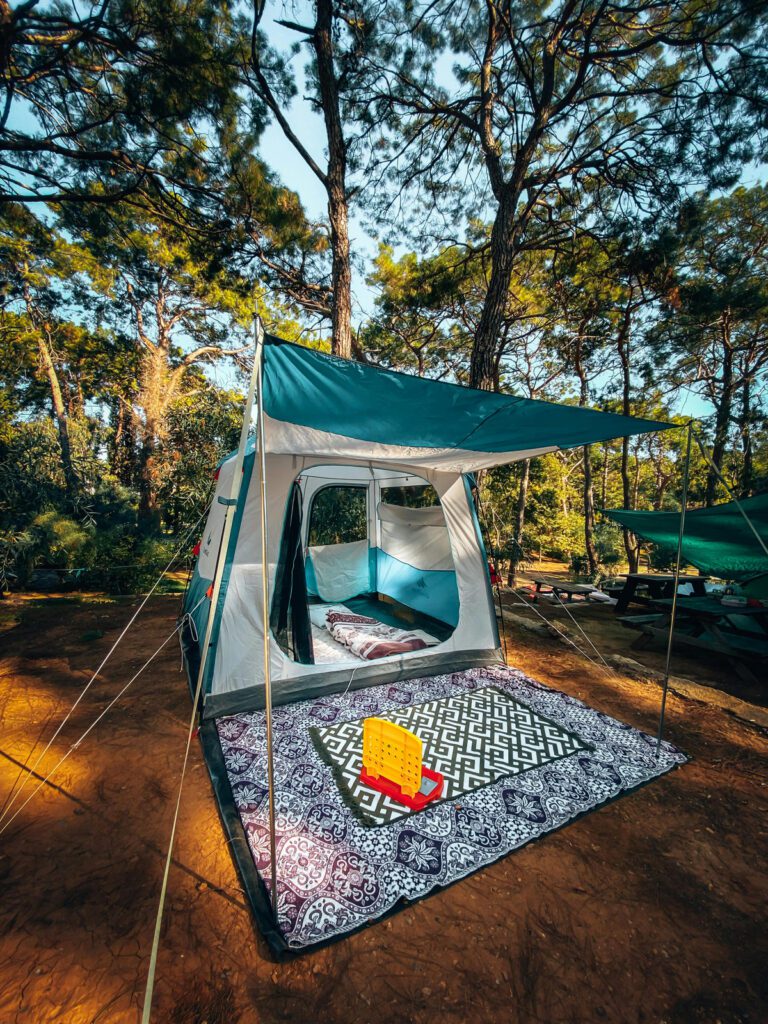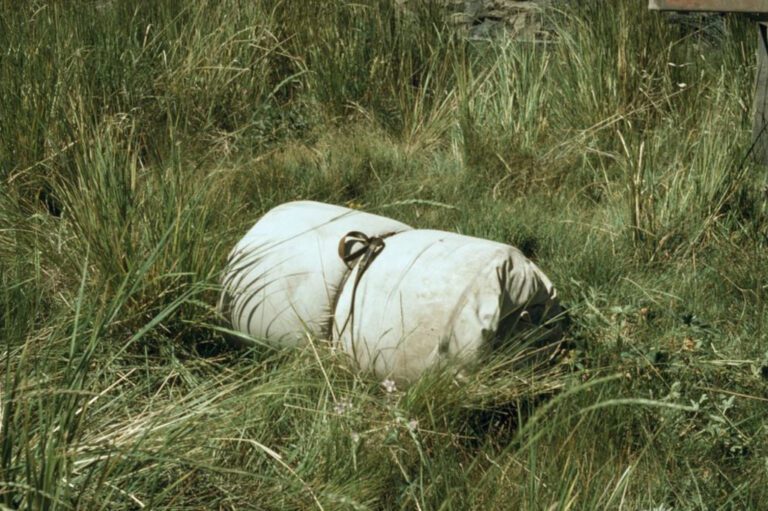Phone
+1-650-666-095
Contact E-mail
[email protected]
Address
16192 Coastal Hwy, Lewes, DE 19958-3608
How Does a Self-Inflating Sleeping Pad Work? We Have the Answers!
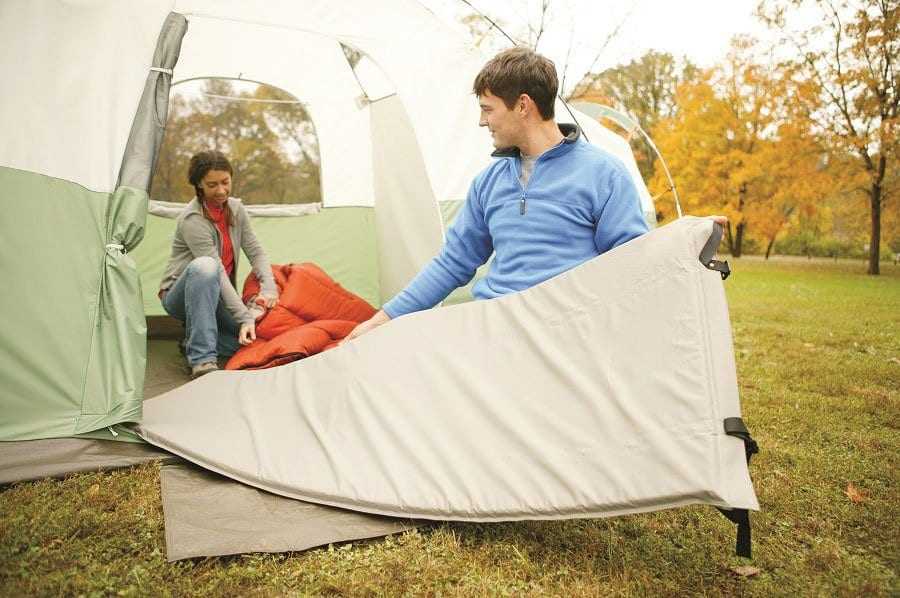

Self-inflating sleeping pads are ideal for campers for many reasons: They do most of the work for you, are compact and easy to store or travel with, and most importantly, they are comfortable. Have you ever been camping with the family and, while unrolling your sleeping pad, wondered: Exactly how does a self-inflating sleeping pad work?
In this article, we at KAMUI will do our best to answer any questions about how a self-inflating sleeping pad works.


What Is A Self-Inflating Sleeping Pad?
The sleeping pad is simple but ingenious, offering a cushion between yourself and the hard or cold ground. A self-inflating sleeping pad is similar to an air mattress. However, this invention was engineered for the outdoors.
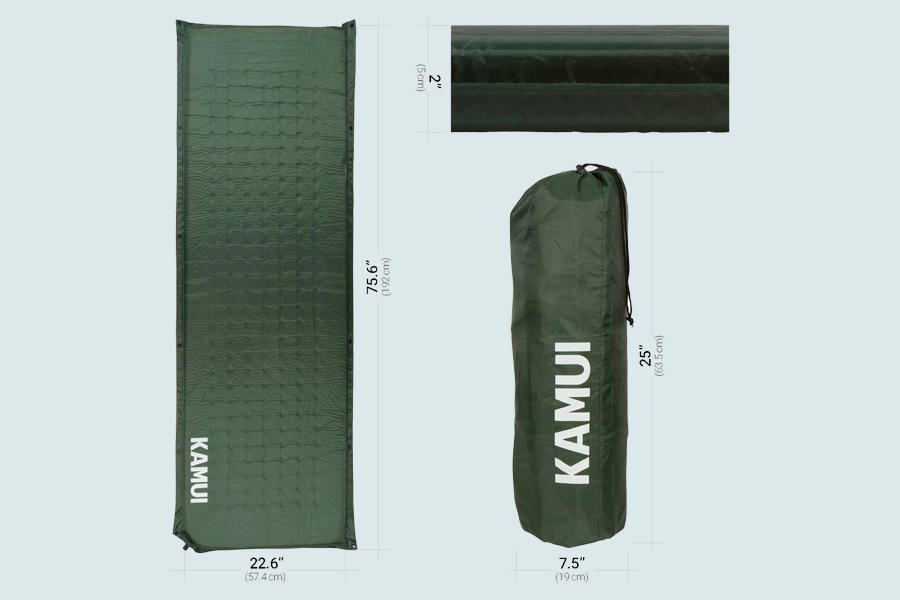

Another sleeping pad that falls under the foam pad category is the self-inflating sleeping pad. This type of sleeping pad has built-in mechanisms that cause it to inflate itself automatically. Today’s engineering gave us the miniature size, weight, and portability of a mattress that does not require a power source to inflate.
A self-inflating sleeping pad offers campers a good night’s sleep. It provides similar amenities to an air mattress, including insulation and comfort, in a much smaller and more convenient package.
How Does A Self-inflating Sleeping Pad Work?
While traveling, an inflating sleeping pad should be tightly rolled up into its storage bag. When you’re ready to sleep or set up camp and open the valve, it will expand to a full-size mat that fits underneath your sleeping bag.
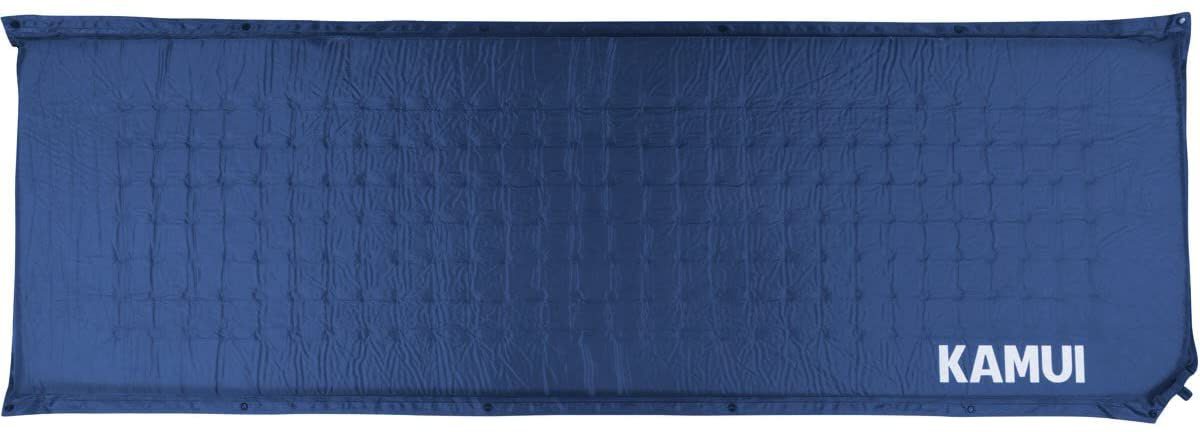

The self-inflating sleeping pad can inflate on its own since it has a specific type of foam inside it. This type of foam has open cells. This means the foam compresses entirely when you roll it up and keep it in its storage bag, and all the air exits the cells. Once you open the valve, air enters the inside of the pad, filling up the cells. As a result, the air will gradually flow inside the foam sleeping pad, allowing it to inflate itself.
Most self-inflating pads require a few manual breaths before use. This process helps the sleeping pad reach its optimum firmness. Remember to close the valve once your sleeping pad is full of air.
How Long Does a Self inflating Mattress Take to Inflate?
Inflation time varies between different brands and styles of self-inflating sleeping pads. Generally, a sleeping pad takes between 15 and 30 minutes to self-inflate.
The self-inflating feature lets you lay your inflatable pad out wherever needed, open the valve, and walk away until it’s full. The pad does all the work for you. The pad should be almost fully inflated when you’ve returned from setting up a campfire or enjoying some s’mores off the campfire. All you need to do now is give it a few more quick breaths to top it off, close the valve, and you’ll be ready for a great night’s sleep.
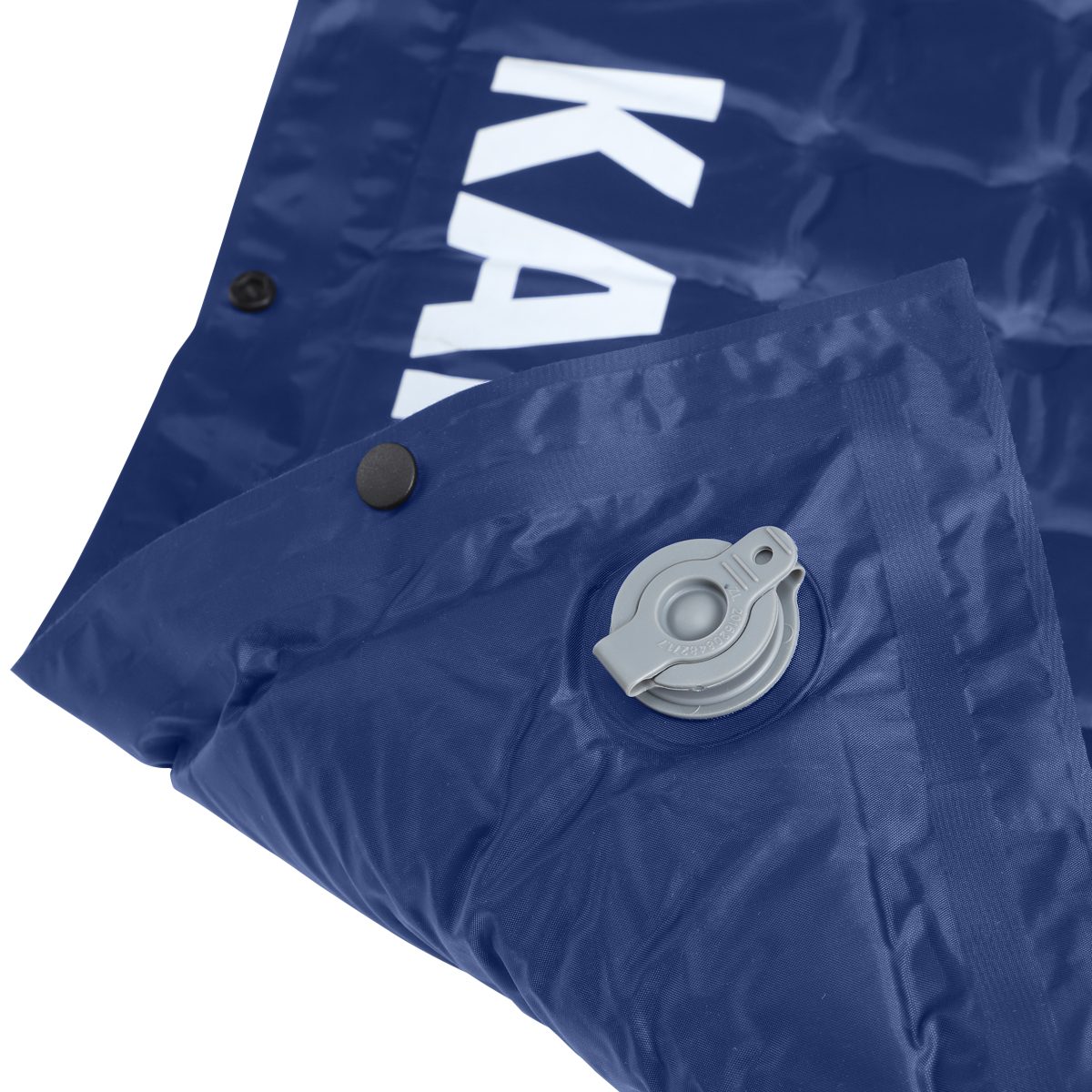

How do I Deflate a Self-Inflating Mattress?
Deflating your self-inflating mattress is simple, but it will take more effort than the inflating step. First, you’ll have to unscrew the pad’s valve.
Next, start rolling the pad while pushing the air toward the valve. You must start from the bottom or the side opposite of the valve so that all the air can exit the pad undisturbed. Close the valve once you’ve rolled your self-inflating pad up and it’s fully deflated.
Now, you will again unroll your mat with the valve closed and roll it up very tightly. This will create a pocket of air at the top of the mat, where the valve is.
For the last step, unscrew the valve and let the air out of the pad. Then, you’re finished and need to tighten the valve back up.


Now you’re ready to break camp and head home.
What Materials Do We Use in a Self-Inflating Pad?
Every sleeping pad is made differently, but most will contain a combination of four standard materials. These materials will make your pad comfortable, lightweight, and durable outdoors.
Inner Core Foam
Most manufacturers use open-cell foam as the primary material to insulate self-inflating sleeping pads. This type of foam consists of cells that aren’t entirely encapsulated and are deliberately left open, making it easy to compress.


Outer Fabric
1. Polyvinyl Chloride
Polyvinyl Chloride, or PVC, is a widely produced synthetic plastic polymer. We use PVC in two different forms: rigid and flexible. Both forms are durable, lightweight, and strong. We use both to line the outside layers of camping mats.
2. Thermoplastic Polyurethane
This material is the perfect combination of plastic and rubber. Thermoplastic Polyurethane is rubber-like in flexibility and durability. However, it falls into the category of plastic. Sometimes, we use this material to manufacture sleeping pads.
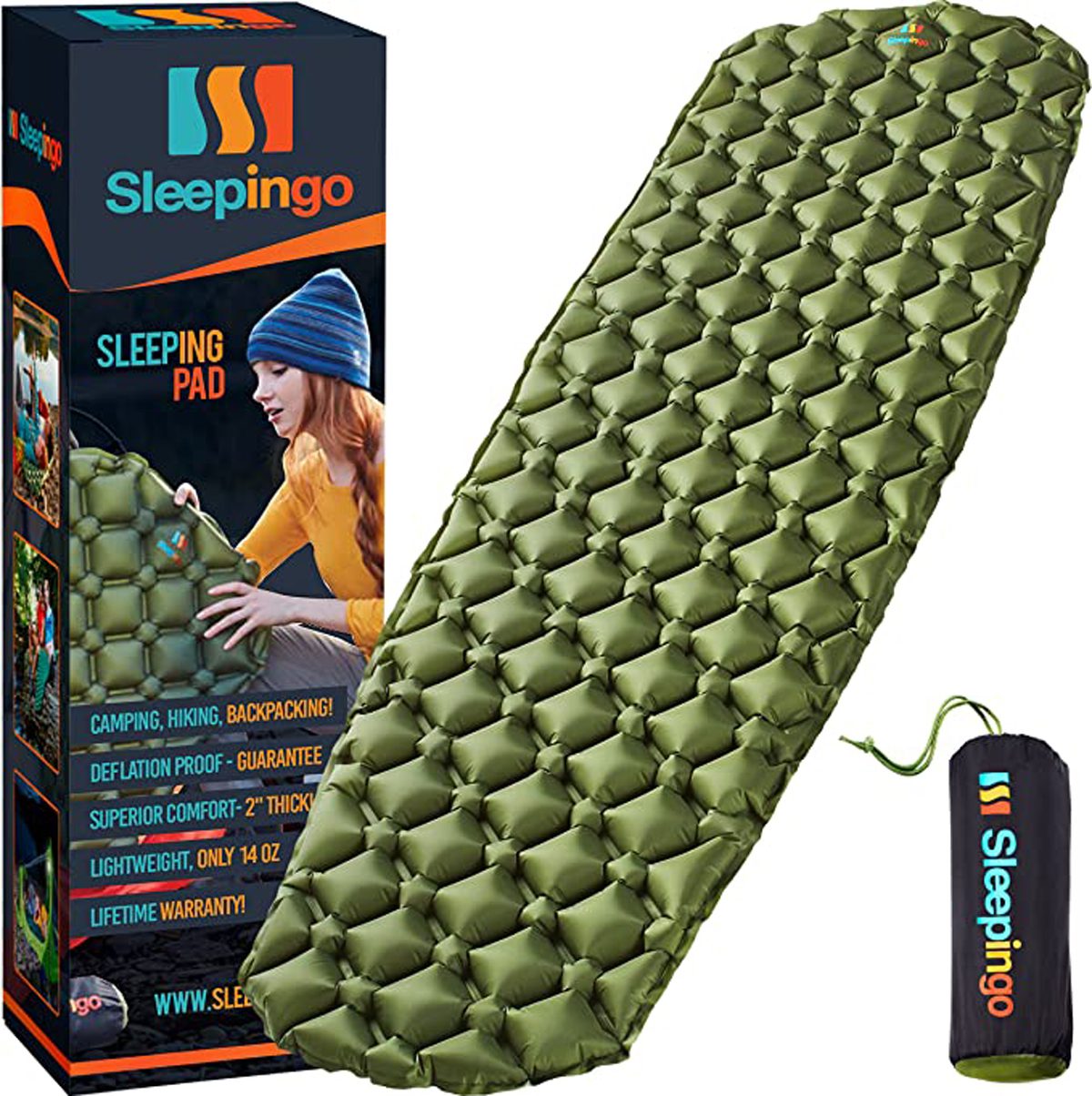

3. Heavy-Duty Polyester Fabric
Polyester fabrics are strong and often water-resistant, if not waterproof. This makes them the perfect outer layer for your sleeping pad. They’re also durable and easy to keep clean.
What Kind of Sleeping Pad Should I Get?
After you have educated yourself on how a self-inflating sleeping pad works, you might want to think about what type of sleeping pad to get for yourself. This decision depends entirely on what you hope to accomplish with your sleeping pad. There are three main types of self-inflating mattresses, and these are:
Closed-cell foam pads
These pads are the original or an old-school sleeping pad used by campers and backpackers everywhere. They require no setup—you unfold them and are ready to go. They require the least setup and are easy to clean but provide the least insulation and comfort.
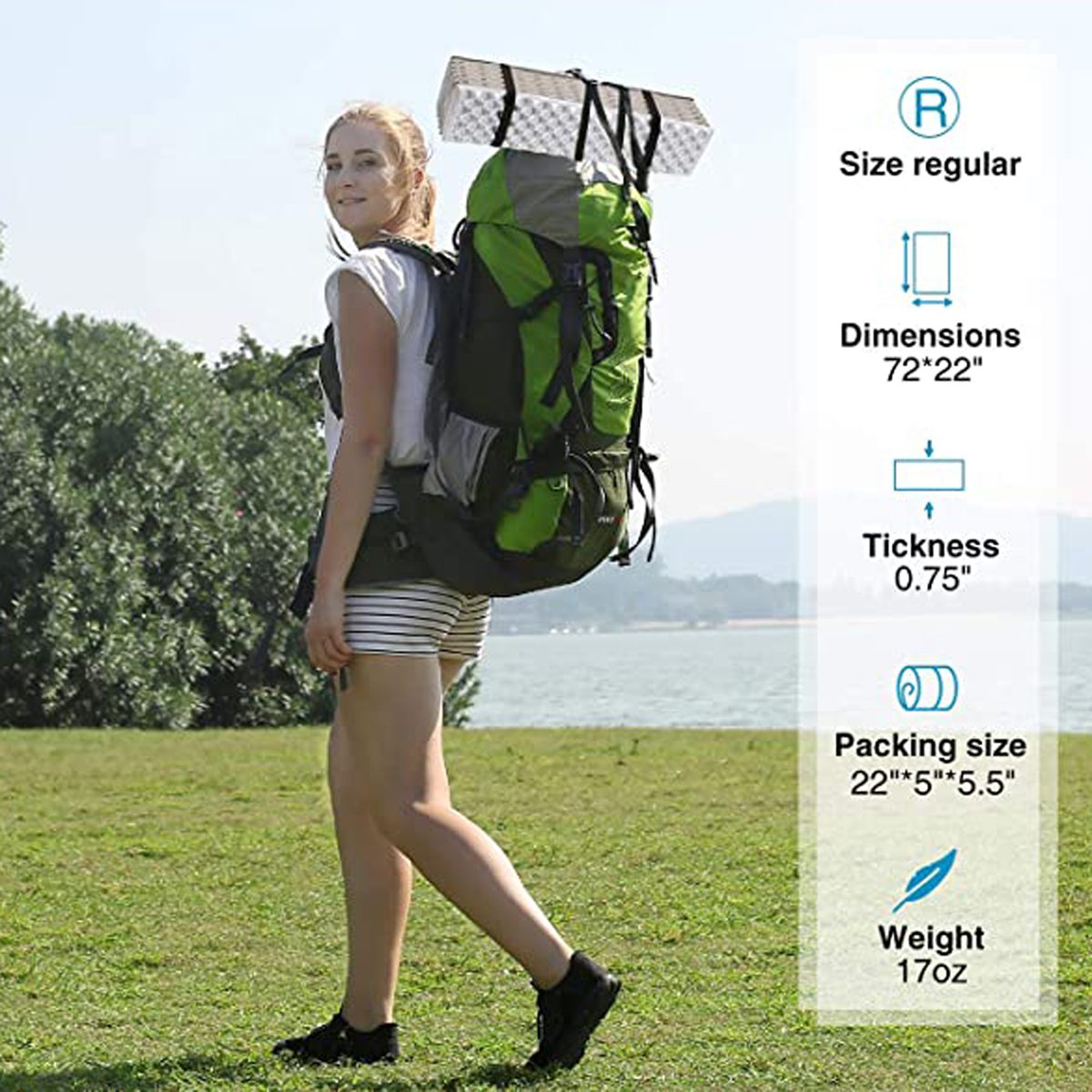

Air sleeping pads
Manually inflated air sleeping pads occupy the least space, making them great for backpacking. However, they require extra lung power to set up, so some sleeping pad brands provide air pumps or built-in foot pumps to make inflating easy. Air pads are known to be crinkly even in the slightest movement, making them not an ideal option for light sleepers.
Self-inflating sleeping pads
A self-inflating sleeping pad is often the most comfortable while requiring the least setup. Unfortunately, most self-inflating sleeping pads are bulkier, making them the best choice for camping near your car. One self-inflating sleeping pad we can recommend is the KAMUI Self-Inflating sleeping pad, specifically made for tents and family camping.
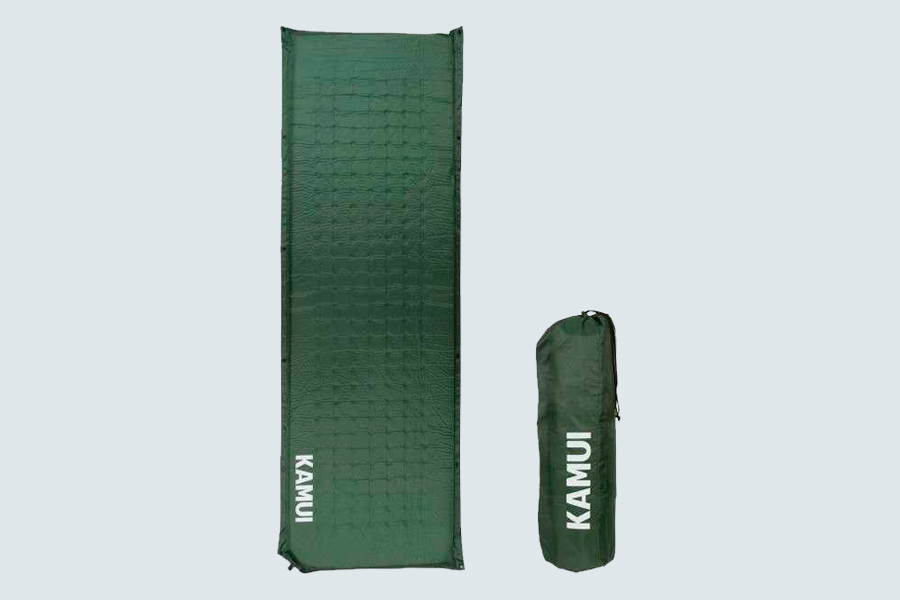

Are Self Inflating Sleeping Pads Comfortable?
Yes, self-inflating sleeping pads are comfortable. Self-inflating sleeping pads are the most comfortable option when sleeping outside. Here is why we recommend them:
1. Insulation
Self-inflating sleeping pads have higher R-values than closed-cell foam and inflatable mats. An R-value rating describes how well your sleeping pad will resist heat transfer. A higher R-value means you will be warmer at night while sleeping. You can read more about this theme in our article describing the R-value.
2. Foam Core
The foam used inside a self-inflating sleeping pad is open-cell foam. Open-cell foam is thicker than its closed-cell counterpart, and because of this, it provides great back support and cushioning.
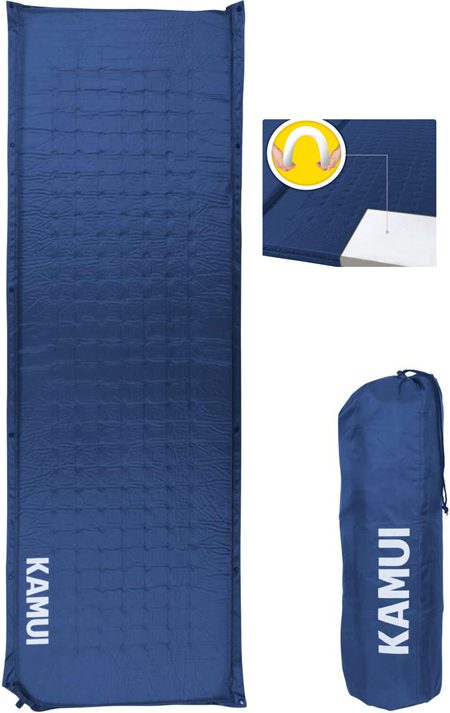

3. Inflatable
Although there is foam inside a self-inflating sleeping pad, there’s air within the pad. The open-cell foam pulls the air into the pad by itself. That is why we call them self-inflating pads. The air alone makes this sleeping pad more comfortable than others!
4. Easily Adjustable
Whether you prefer a soft or firm sleep surface, your self-inflating sleeping pad will do the trick and provide comfort. You can easily add to and adjust the firmness of your sleeping pad with the air valve.
In addition, sleeping pad manufacturers have designed inflatable sleeping pads with clip buttons so you can connect multiple pads. This allows you to create a sleeping platform with the perfect width and firmness for a splendid night’s sleep outdoors.
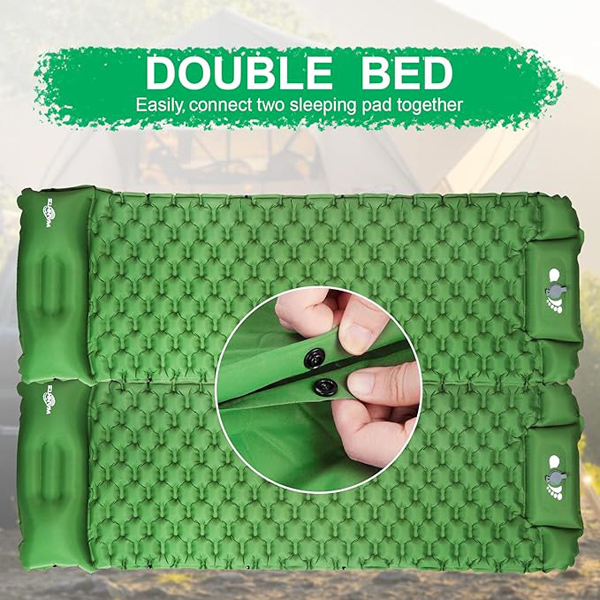

5. Durability
One of the greatest things about a self-inflating sleeping pad is its durability. A self-inflating sleeping pad uses a combination of foam and air to provide comfort while you camp. Your sleeping pad will still be effective in case of a tear or puncture. The open-cell foam will hold its shape and provide insulation and cushioning, even if the camping mattress’s outer layer is broken.
Although self-inflating sleeping pads are comfortable, they have a few cons. Here they are:
1. Packability
Self-inflating sleeping pads are not as compact as inflatable or air mats, making them difficult to pack into small places such as a backpack. However, they fold and roll up into a packable size for travel.
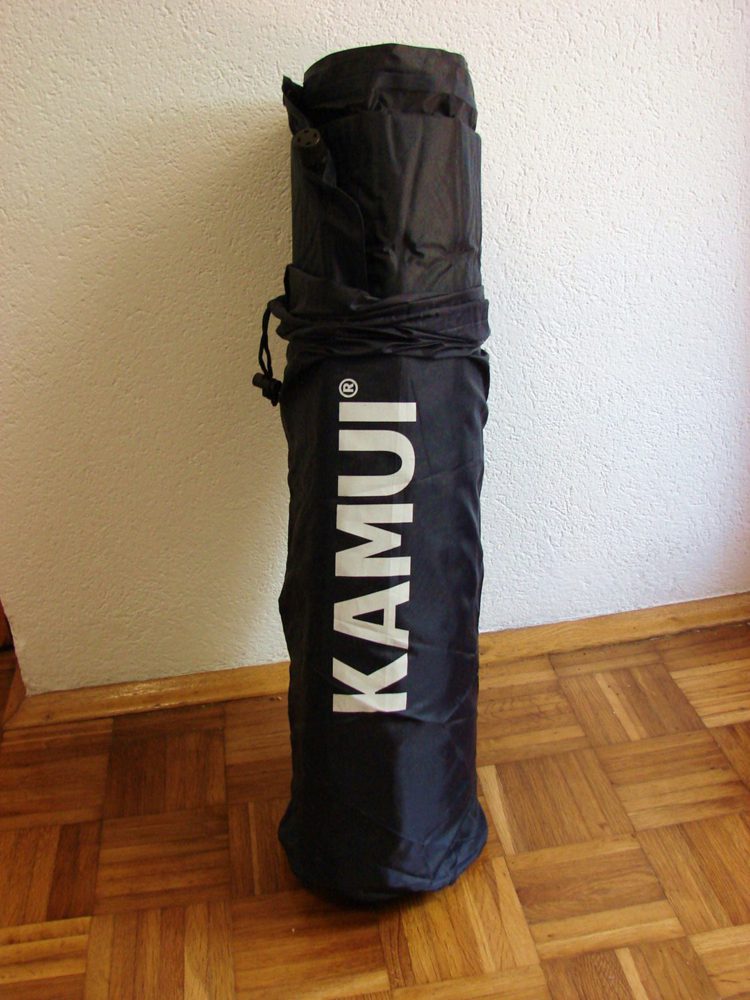

2. Weight
Self-inflating sleeping pads are heavier than closed-cell foam pads. A closed-cell foam pad weighs around 6 ounces, and a self-inflating sleeping pad weighs around 16 ounces or 1 pound, which might not be the best option when backpacking. If you’re looking for an ultralight option, a closed-cell foam pad should be on your list.
What Can I Use A Self-Inflating Sleeping Pad For?
The most obvious and frequent use of a self-inflating sleeping pad is for camping. The good news is they can serve multiple purposes if you let them. We can use them for:
- Spare Mattress
- Travel Mattress
- Seat Cushion
- Backpacking
- Camping


FAQ
The short answer is: Yes, a sleeping pad is necessary for any camping trip. Sometimes, keeping your body temperature up when lying on the ground can be challenging because the soil draws the heat from your body. Without a sleeping pad, you’ll lack critical insulation from low temperatures, even when camping in summer.
Every sleeping pad has something called the R-value. R-value relates to an object’s thermal resistance or ability to prevent the thermal transfer from one object to another. Sleeping pad R-values range from about 2 to 8. The higher the R-value, the greater the insulating power of your sleeping pad.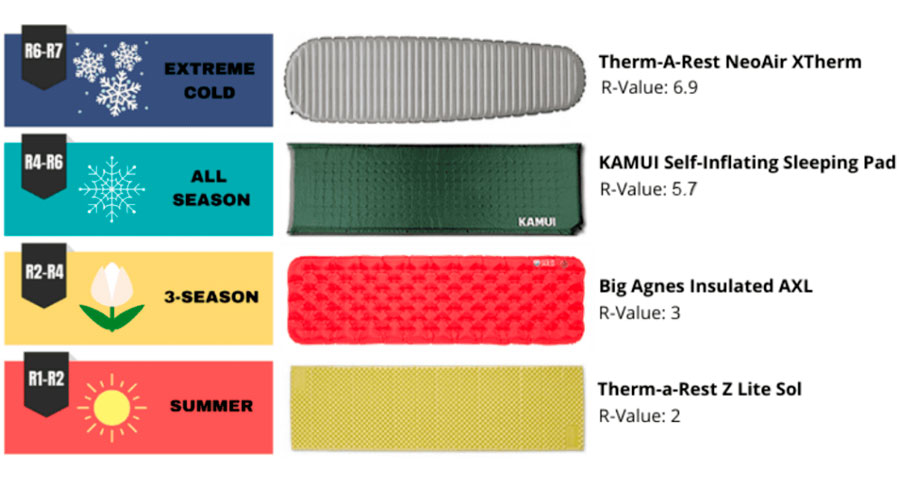

To answer this question, you first need to know how a self-inflating sleeping pad works. Self-inflating sleeping pads have a naturally high R-value, contrary to some air or closed foam mattresses. This is because they combine open-cell foam and air.
Additionally, you can stack sleeping pads onto each other to increase their R-value. Some self-inflating sleeping pads are designed with snaps or buttons along the sides to connect to other sleeping pads. 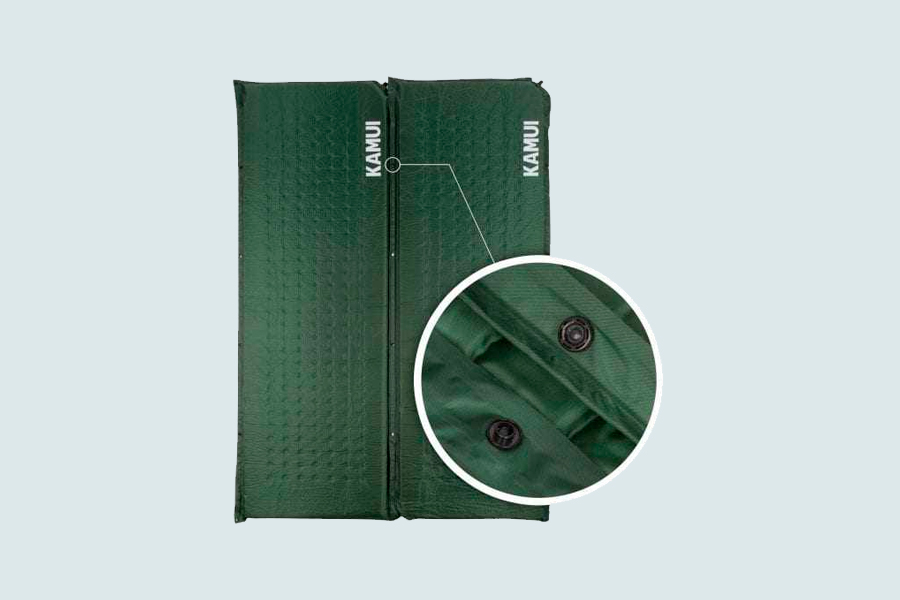

Once you acquire a self-inflating sleeping pad and know how it works, make sure you take good care of it. Wash it once every season, and don’t forget to store it safely at home. The best way to store it is unrolled and with an open valve. The valve should always be positioned upwards so the moisture inside the sleeping pad can escape.
No, a yoga mat cannot work as a sleeping pad because it lacks cushioning and insulation. If you want to have a fantastic sleep experience outdoors, go for a quality sleeping pad like the KAMUI self-inflating pad to ensure you don’t wake up with a sore back.
Yes, you can add air to a self-inflating mattress. After opening the air valve, allow the pad to self-inflate fully. Then, manually blow more air into it until it is firm enough.
There are countless ways to make your self-inflating mattress comfortable. First, if they have built-in snaps, you can stack two pads together for extra cushioning and insulation, especially when winter camping. Second, you would like to give your sleeping pad some TLC when camping on rugged terrains with rocks and thistles all around; putting an underlayer to your sleeping pad, such as a closed-cell foam pad or a yoga mat, will add to its lifespan.
Conclusion
A self-inflating sleeping pad is one product that can change how you camp and add comfort and convenience to your camping routine. This essential camping accessory is the piece of gear you always needed.
Knowing how a self-inflating sleeping pad works can benefit one by showing them the up-to-date technology of this sleep system and innovative ideas that offer the best sleep experience outdoors.
KAMUI Self-Inflating Sleeping Pad
- Connectable with multiple sleeping pads
- 4-season sleeping pad
- Provides great back support
- Comes with a storage bag
